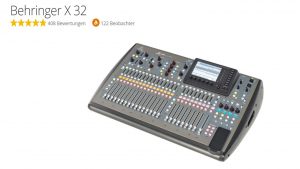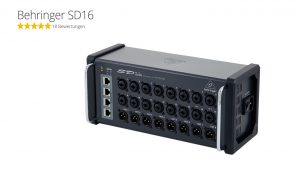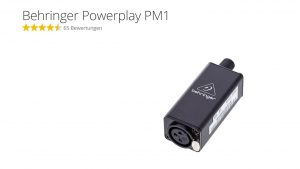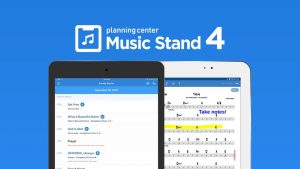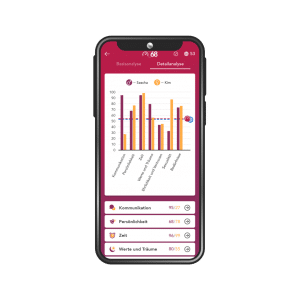Worship Instructor
A worship instructor, also called a co-worship leader, takes the whole worship team to a new level. Through an extra microphone the worship instructor can give instructions, he can say that something should be repeated or when the band should increase more. He is responsible for the musical quality of the band during a performance and supports the worship leader.
Important for the Worship Instructor:
- use a uniform language, i.e. not always different terms for the same result
- Terms instead of sentences (intro, verse, chorus, bridge, repetition, boost, more drums, break down, outro etc.)
- He should have the ability to lead the band individually. When he realizes that people don’t stop singing, he has to give the band instructions in a matter of seconds. Even if the worship leader prays and the prayed becomes more charismatic (louder and more emotional), he must tell the worship team how to increase it.
(Tip for the worship leader: In this case please take off the in-ears, because the instructions of the instructor can distract you.)
In-Ear Monitoring
In-ear monitoring is like normal monitoring, only 1000 times better. No more feedback and everyone has their own individual mix, so the times when a singer couldn’t really hear himself on stage are finally over. Every musician knows that, but what everyone knows is that the whole thing can be quite expensive. But that doesn’t have to be the case! Here’s a little list of things you need:
digital mixer incl. stagebox (since you can output enough outputs to send each musician his own mix to his headphones – standard here is the Behringer X32)
- Body Pack (converts the output signal which arrives via an XLR cable to a 3.5 mm jack so that the musician can connect his headphones – the Behringer Powerplay PM1 is a good option) Behringer Powerplay PM1)
- InEar headphones (e.g. Shure SE215-CL as a relatively inexpensive and professional solution).
Backing Tracks
Almost all somewhat professional bands use backing tracks. These tracks are there to support the band, for example with violins, pads or other “fill” instruments. They are also very helpful for modern, electronic worship songs, because not every band has the capacity to play all synthesizers in the song live. The backing tracks are dennohc no substitute for the band! Always be sure to improve the sound quality of your individual band members so that the tracks remain optional and don’t have to become a must for every song.
At www.multitracks.com you can find almost all known christian songs as backing tracks, which have to be purchased separately. But they are the original instrumental tracks from the bands.
To play with backing tracks, there are several solutions, some are complex, some rather simple. Either way, you have to take some money into your hands to buy the instrumental tracks if you don’t want to produce them yourself.
A complex possibility is to use a DAW like Ableton Live together with an audio interface. You can import the backing tracks here and route them to different outputs. One track (stereo at best) goes on the system and the other with click and guide only on the in-ears of the musicians. The drummer in particular must be able to hear the click loud and clear at all times.
It’s easier with “Playback” from multitracks.com. This is a complete solution for the iPad, with which you can easily import the different tracks and put them together in a set list. This also requires an audio interface. The supported interfaces and more information can be found on the website of multitracks.
Pads
Transitions between songs are often difficult, especially when the pianist is still at the beginning and can’t lay a carpet. For songs with constant keys, a pad can run in the background, providing a harmonic transition and no silence.
We as a band just let the pads run through the background of most of the songs, thus creating more fullness. During prayer you can play a simple chord sequence and hold the pedal, the pad does the rest.
Here you can find Pads to buy & download.
Another possibility is that either the keyboard has a pad sound that can be switched on using the dual function or you use external software like Ableton Live and connect the keyboard via MIDI using a laptop & an audio interface.
Music Sheets vs iPad
Music Sheets can be an absolute disaster and in the last 15 years as a musician I have not found a good solution for sheet music. We have created folders for each musician, but after a few months the sheets have flown around everywhere again. We created boxes with hanging files, which served the worship leader as a loose sheet collection of the songs. But no matter which systems we tried, it always led to the worship leader printing out the notes himself every Sunday.
Big communities or bands don’t have these problems, because they all play the songs by heart anyway. As a worship band we also do this at events, but in our church services we have been using a new technique 😉 for a few years now.
Tablets are the best solution for bands with sheet music. Everything is always on the tablet and available at any time. The easiest solution is to send PDFs that are stored on the tablets and then retrievable. There is also a solution for the worship leader with acoustic guitar and microphone, who has no free hand to scroll on.
Services and Music Stand
In our church we use “Planning Center Services”, an organizational app that is really ingenious for small congregations, but also large congresses. There is also an app calledMusic Stand, a digital music folder. There all uploaded songs are listed and you can create playlists, which will be played later in worship. Also notes can be made and shared for the other band members.
SongSelect
With SongSelect the licensing agency CCLI provides a platform with chords, lyrics and notes for Christian worship songs. With a cheap subscription almost every Christian song can be downloaded in the desired key. The song database can also be linked to services such as Planning Center.
Übergänge zwischen den Songs sind oft schwierig, vor allem wenn der Pianist noch am Anfang steht und keinen Teppich legen kann. Bei Liedern mit gleichbleibenden Tonarten kann ein Pad im Hintergrund laufen, es sorgt für einen harmonischen Übergang und es entsteht keine Stille.
Wir als Band lassen bei den meisten Liedern die Pads im Hintergrund einfach durchlaufen, so entsteht mehr Fülle. Beim Gebet kann man so z.B. auch einfach eine simple Akkordfolge spielen und das Pedal halten, das Pad erledigt den Rest.
Hier findest du Pads zum Kaufen & Downloaden.
Eine andere Möglichkeit ist, dass entweder das Keyboard einen Pad Sound hat, den man per Dual-Funktion dazuschalten kann oder man nutzt externe Software wie Ableton Live und verbindet das Keyboard per MIDI mithilfe eines Laptop & einem Audio Interface.
Notenblätter vs iPad
Notenblätter können die absolute Katastrophe sein und in den letzten mehr als 15 Jahren als Musiker habe ich nicht eine gute Lösung für Notenblätter gefunden. Wir haben Ordner für jeden Musiker angelegt, doch nach ein paar Monaten sind wieder überall die Blätter rumgeflogen. Wir haben Boxen mit Hängeregistern angelegt, die dem Lobpreisleiter als lose Blattsammlung der Songs dienten. Doch gleich, welche Systeme wir noch ausprobierten, es führte immer dazu, dass der Worshipleader die Noten selbst jeden Sonntag ausgedruckt hat.
Große Gemeinden oder Bands haben diese Probleme nicht, da sie ohnehin die Lieder alle auswendig spielen. Das machen wir als Worship Band auch auf Events, in unseren Gottesdiensten jedoch nutzen wir seit ein paar Jahren eine neue Technik 😉.
Tablets sind die beste Lösung für Bands mit Notenblättern. Es ist immer alles auf dem Tablet und zu jederzeit abrufbar. Die einfachste Lösung ist PDFs zu versenden, die abgespeichert werden auf den Tablets und dann abrufbar sind. Auch für den Lobpreisleiter mit Akustikgitarre und Mikrofon, der keine freie Hand hat zum Weiterscrollen gibt es eine Lösung.
Services und Music Stand
In unserer Church benutzen wir „Planning Center Services“, eine Organisationsapp, die für kleine Gemeinden, aber auch große Kongresse wirklich genial ist. Dazu gibt es eine App namesMusic Stand, ein digitaler Notenordner. Dort sind alle hochgeladenen Songs aufgelistet und man kann Playlisten erstellen, die später im Lobpreis gespielt werden. Auch Notizen können gemacht und für die anderen Bandmitglieder geteilt werden.
SongSelect
Die Lizenzagentur CCLI stellt mit SongSelect eine Plattform mit Akkorde, Texten & Noten für christliche Worshipsongs bereit. Mit einem günstigen Abo kann fast jedes christliche Lied in der gewünschten Tonart heruntergeladen werden. Außerdem lässt sich die Liederdatenbank auch mit Diensten wie Planning Center koppeln.

